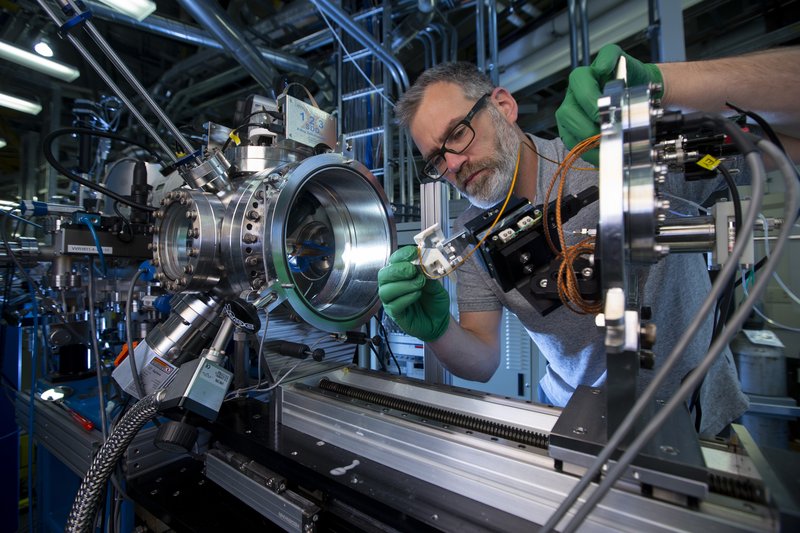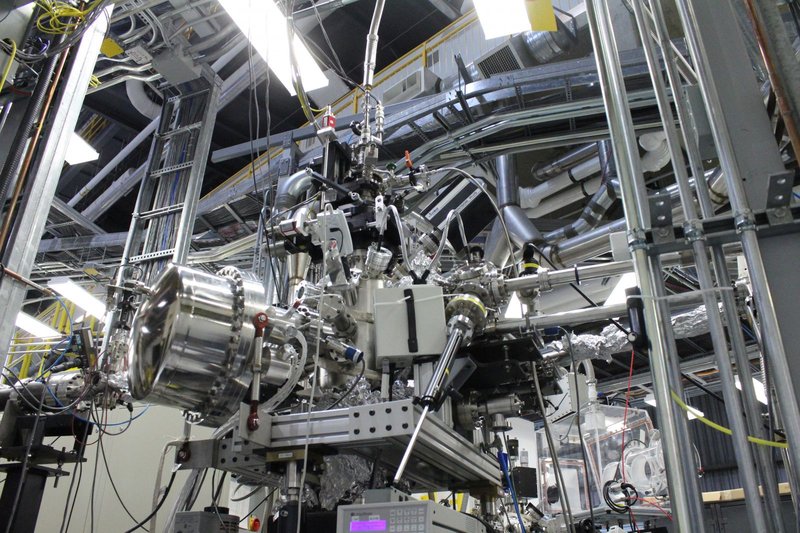Access SGM Beamline
Before sending mail-in samples to the CLS complete and submit the SGM Sample Mail-in Form found in Sample Mail-in Program, which has detailed instructions for completing the form.
Visit your User Portal to sign-in to your project, submit a proposal, update your project, request beamtime or report a publication.
Access your SGM data and perform data analysis on the SGM Data Website.
XAS Endstation
Normal Operations
The X-ray Absorption Spectroscopy (XAS) endstation measures under ambient pressure and consists of a vacuum compatible PI hexapod for sample manipulation at better than 10 microns, two 150 mm long trapezoidal focusing Kirkpatric Baez (KB) mirrors for imaging/mapping at less than 50 x 50 microns and transmission, fluorescence, optical and electron detectors. Solid, liquid and gas samples can be measured, including in-situ and operando measurements.
XPS Endstation
OFFLINE (until Nov 2024)
The X-ray photoemission spectroscopy (XPS) endstation measures solid-state samples under ultra-high vacuum conditions with a variable polarization source (APPLE-II w/ 54 mm period).
The major machine upgrade started in June 2024 has encountered some problems. Best case scenario is that User Operations start February 2026. Call for General User Proposals expected in 2026. Polarization capabilities on the SGM beamline are available with advance notice.
The Spherical Grating Monochromator (SGM) beamline is a soft x-ray beamline located at the Canadian Light Source. The beamline is equipped with two in-line endstations that can be used for high resolution x-ray absorption spectroscopy and photoelectron spectroscopy. The first endstation is maintained at ultra high vacuum and houses a Scienta SES-100 photoelectron spectrometer and a single silicon drift detector. The second endstation is capable of operation at near-ambient pressures and uses an array of silicon drift detectors for measurement of partial fluorescence yields. The beam is focussed to 10 microns in this endstation for x-ray fluorescence mapping of light elements.